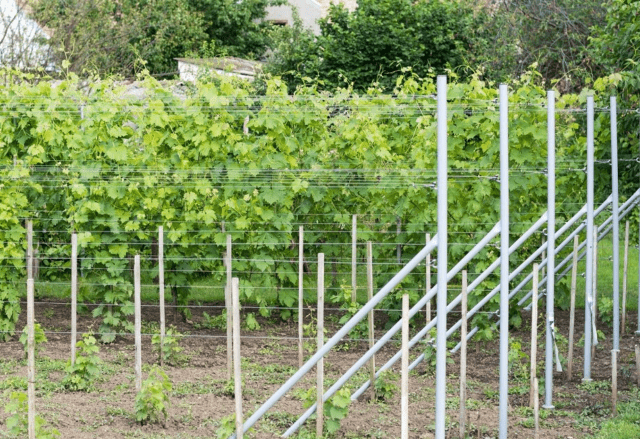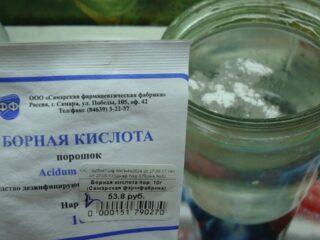Content
Lastochka grapes are a hybrid crop characterized by high yields and sufficient frost resistance. The variety is considered early, because the harvest manages to ripen in 3-3.5 months.
History of origin
Lastochka table grapes were developed in Russia. The originator of the variety is Pavlovsky E.G. When creating the hybrid, two species were involved: Beauty and Super Extra. The Lastochka variety is not included in the register of breeding achievements.
Description of the Lastochka grape variety
Lastochka grapes are a vigorous crop with dark blue berries. The harvest ripens in the summer, so the plant is valued for its early ripeness. The root system is well developed.
Bunches
Lastochka grapes have medium-sized clusters. The shape is cylindrical. Weight depends on the age of the crop and growing conditions.

The average weight of a bunch ranges from 400 to 800 g
Berries
The color of the berries is dark blue. Shape – oval, size – large. Berry weight – 8-12 g. The grape pulp is juicy, compacted.The taste is pleasant, dessert, sometimes with a slight note of nutmeg. The aroma is unobtrusive. The skin of the berries is thin, but the clusters are quite stable during transportation.
Vine
The ripening of the vines is good. The shoots produce a medium-sized bush with increased foliage. The leaf blades have prominent veins. Foliage color varies from light green to dark green. By the end of the season, the leaf blades acquire a brownish tint.
Characteristics of Lastochka grapes
Before purchasing any grape variety, you need to familiarize yourself with its characteristics. Only the right crop can please you with a harvest.
Ripening period of Lastochka grapes
In the description of the variety it is noted that Lastochka ripens in 95-100 days. Consequently, the variety belongs to the super-early variety.

In regions with warm climates, the first harvest is harvested in the second ten days of July
In areas with cool summers, grapes ripen 1-2 weeks later, i.e. by the end of July or early August.
Productivity
Experts note the unstable yield of Lastochka grapes. The indicator depends on the growing conditions and proper care. The average yield from each bush is 15-25 kg. This is considered a good indicator for culture.
Taste
The berries have dense, crispy pulp. The peel is thin, you can’t feel it when you eat it and it doesn’t spoil the taste. The pulp is sweetish, with a nutmeg aftertaste.
Growing regions
The Lastochka variety can be grown in various regions of Russia. We should not forget that in areas with cold and little snowy winters, the crop must be covered.
Frost resistance
According to the description of the originator, the Lastochka variety is a crop with high frost resistance. The bushes can withstand up to -23 °C.To prevent the vine from being damaged by frost, it must be removed from the support and covered with agrofibre and spruce branches.
Drought resistance
Drought resistance is average. Without watering and precipitation, the berries remain small and the yield is low. Therefore, periodic soil moistening and crown irrigation are important.
Resistance to diseases and pests
The Lastochka variety is still at the testing stage. Nothing is stated about its resistance to diseases and pests. Therefore, when cultivating seedlings, it is necessary to take care of preventive spraying.
Methods of application
Grapes can be used both fresh and for winter preparations. It is used for making juice, compote, and wine. The grapes will keep in the refrigerator for 1-2 weeks.
Advantages and disadvantages
The Lastochka grape variety has its advantages and disadvantages. Winegrowers appreciated it for its early harvest ripening and the versatility of its fruits.

According to the description of the originator, the Lastochka variety rarely suffers from mildew
Pros:
- early ripening of the crop;
- good yield;
- pleasant taste with nutmeg notes;
- resistance to transportation;
- versatility of application;
- unpretentiousness to growing conditions.
Minuses:
- small bunches;
- not too large berries.
Landing Features
When purchasing a seedling, you need to pay attention to the root system. If it is closed, then the bushes are placed directly into holes in an open area.

Planting work is recommended to be carried out in the spring, after the threat of frost has passed.
Wells for culture are prepared in advance. They should be 30-35 cm deep. Leave 2 m between adjacent seedlings.
Algorithm for carrying out planting work:
- Crushed stone and broken brick are poured into the bottom of the dug hole. The drainage layer should be 10-15 cm.
- Make a mound of fertile soil in the hole with the addition of sand (2:1).
- A seedling is placed on an earthen mound. The roots are covered with ash.
- The hole is covered with earth. Gently tamp with your hands so as not to damage the roots of the plant.
- 7-10 liters of water are poured into the soil around the trunk.
If planting Lastochka grapes is planned for autumn, then the procedure is carried out no earlier than October. It is necessary to take into account that a young seedling may suffer from frost, so care should be taken to provide reliable shelter for the winter.
Rules of care
The very early Lastochka grapes are classified as frost-resistant crops. According to tests, seedlings are able to withstand frosts down to – 20 °C.

It is advisable to cover young bushes for the winter even in the southern regions, since they react negatively to frosts
In areas with cold climates, it is recommended to grow Lastochka grapes in greenhouse conditions. For the winter, the vine is removed from the trellis, cut to two meters, covered with spruce branches, and agrofibre is pulled over the supporting structure. When snow falls above the bushes, snow mounds (30-40 cm) can be formed.
Timely care measures can lead to increased yield and improved taste of berries:
- Bush pruning. Conducted in autumn and early spring. In autumn, shoots are pruned to a length of 2 m. In spring, damaged branches are removed.
- Loosening the soil. The procedure is necessary in order to saturate the roots of the seedling with oxygen. The soil in the tree trunk circle is loosened at least five times per season.
- Weed removal. The grass is pulled out as it appears. To slow down the process of weed emergence, the tree trunk circle is mulched.Mown grass, hay, straw, and peat are used as mulch.
- To get a good harvest, you need to feed the crop. You can use rotted manure. For each seedling you will need one bucket of diluted liquid. If there is no manure, the bushes can be fed with mineral fertilizers. They are buried in the ground to a depth of at least 30 cm. In the spring, it is recommended to feed Lastochka grapes with ammonium nitrate or potassium salt. 100 g of the substance are diluted in a five-liter bucket.
- Garter vine. After wintering, the shelter is removed, and the branches of the grapes are tied to a support. This is done before the buds open.
- Timely watering is important for planting a crop.

The first moistening is carried out in the spring after the snow has melted and the ground has dried out.
20 liters are poured under each seedling. The second watering is carried out before flowering. The third procedure is planned at the time of tying the fruit clusters.
Treatment against diseases and pests. The first spraying is carried out in the spring, at the time of tying the vine to the support. To do this, use copper sulfate (3%) with the addition of urea (300 g per bucket of water). You can prevent infection of Lastochka grapes with oidium using the drugs Opercot and Shavit. Before flowering, spray with Aktara and Ridomil. These products will protect plantings from ticks, aphids, and fungal diseases.
When the grapes fade, they are treated with fungicides. For these purposes, Previkur, Skor, Thanos are used. Before wintering, the bushes are sprayed with iron sulfate. The preventive measure is scheduled for a windless day without precipitation, since the drug is easily washed off with water.
Conclusion
Lastochka grapes are an early-ripening hybrid that is in demand among gardeners. With proper planting and timely care, it practically does not get sick. The taste contains nutmeg notes. Berries have a universal purpose. They are used to make wine, juice, compote. Bunches can be transported over long distances.








